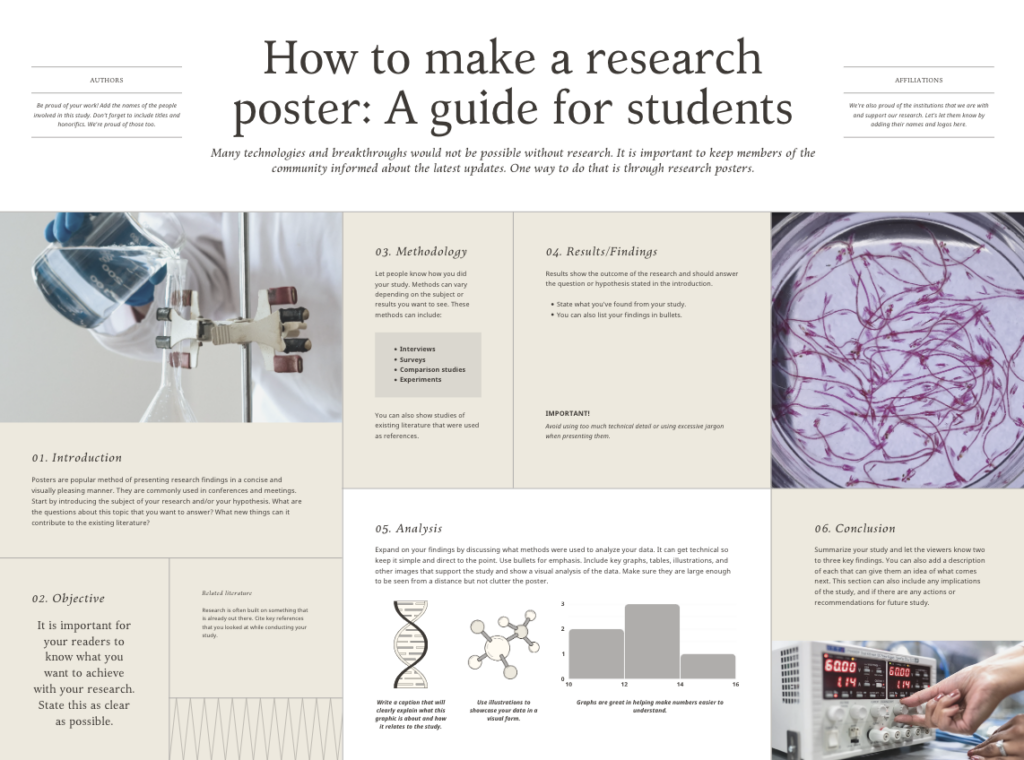
For my first tutorial, I chose to use Canva to make an “academic-style” poster. I say “academic-style” because I did not make a poster to share academic research of my own – rather, I used the style exemplified to share a few academic statistics alongside helpful tips for students surrounding a topic I am interested in: social media getting in the way of youth connecting in-person.
I began with a template that looked like this:

I chose this template primarily because I like the fonts – they are clean and easy to read, while not being boring – and some of the layout details, such as the general sub-sectioning of items. However, I decided to use cartoon illustrations rather than photos to make the poster more fun, and changed up the colours to be more eye-catching. Furthermore, as per the video tutorial’s suggestion, I put a big statistic in the middle with an illustration to suit the factoid in order to capture attention.
After gathering some insightful information and statistics regarding my topic, I brainstormed additional ideas to include. I used the left section to highlight some key information about dopamine and phone-use, as well as its addictive affects. However, I did not want it to seem like all social media use is bad, so just below this information I showed how scrolling is useful: content one likes = potential activities = opportunities to make friends in real life!
In the right column, I listed “Actionable Items” for students reading the poster. This is a term frequently found in self-help books and resources that I find particularly helpful, as rather than just labeling it as “steps” or “tips”, the user can engage in the items in whichever order makes sense for their needs, and choose not to engage in what does not suit them.
My final poster looks like this:

As someone who is pursuing an elective teachable (drama) that often has extracurricular opportunities for students, being able to not only use a platform like Canva to make posters to advertise the opportunities, but also to know how to best capture the attention of an individual walking past, is invaluable. From this tutorial, I have gained useful information relating to attention-span and attention-grabbing that I will be able to bring to my career as a teacher.